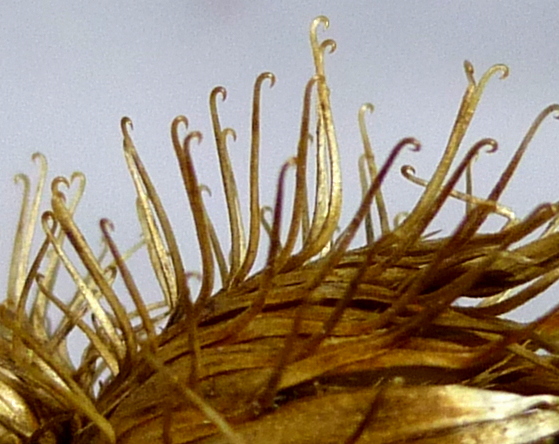
A sticky idea, inspired by nature
Perhaps the greatest inventor of all time does not have a single patent to her name, but she has been the inspiration for many other innovators. It is the products that these other innovators have created that now have the patents and have gone on to become huge global brands.
‘She’ is, of course, ‘Mother Nature’, the greatest inventor in the three billion year old universe. Not only is she an inventor and an innovator, but she is the originator of the “continuous improvement business strategy”, which in her case is called evolution.
Nowadays, there is even a term for our attempts to create things inspired by her natural and biological entities and processes. The term is ‘biomimicry’ and perhaps its most famous example led to the creation of the brand that was originally marketed as “the zipper-less zipper.”
 That story begins in the Jura Mountains; the year is 1941 and a Swiss engineer called George de Mestral and his dog have gone out hunting for the day.
That story begins in the Jura Mountains; the year is 1941 and a Swiss engineer called George de Mestral and his dog have gone out hunting for the day.
On their return, De Mestral noticed that attached to his trouser legs and his dog’s fur were a number of burdock burs. Naturally curious he wondered how exactly the seeds stuck so effectively to both surfaces.
He detached some of the burs and took them home with him. Once there, he put them under a microscope and started to examine them.
The answer was immediately obvious. The burdock bur was covered in thousands of tiny tendrils, each of which ended in a tiny hook. It was these hooks that allowed the burs to catch on anything that rubbed against them.
Now, individual large hook and loop fasteners had been common for many years, but a material made up of tiny multiple hooks, which would allow objects to be quickly and easily “stuck” together and then as easily pulled apart was something completely new.
De Mestral set about trying to find a way to produce such a material. It would take him many years to find an answer to the challenge.
His first prototypes used two cotton strips, with one of the strips having hundreds of randomly situated tiny hooks embedded. The random placement allowed the hooks to be more likely to find a loop in the second side of fabric where the loops were also randomly sewn in.
However, while the cotton strips worked well at first, the cotton hooks didn’t stand to many attachments and detachments.
He started trying other materials and eventually found that heat-treated nylon worked best, being very durable. His new production process involved producing two strips of material, both with loops, before cutting the tops off the loops on one side, creating hooks.
Though he now had a durable way to mimic the tiny hooks and loops sticking mechanism of the burdock seeds, he still had no way to mass-produce Velcro. It would take another ten years before he finally invented a loom that could automatically weave the nylon appropriately and then trim the loops.
He applied for and got a patent in 1955.
For a name, De Mestral decided on a portmanteau word created from the French ‘velours’ (velvet) and ‘crochet’ (hook). The new brand name was Velcro.
Launched in the late 50s, it appeared in TIME in 1958. It got a huge PR boost when, a few years later, NASA astronauts used it to help secure pens, food packets and equipment they didn’t want floating away in zero gravity.
 Nowadays Velcro is used in everything from blood pressure gauges to floor mats in cars and, of course, on the front of children’s shoes. It was used in the first ever human artificial heart transplant.
Nowadays Velcro is used in everything from blood pressure gauges to floor mats in cars and, of course, on the front of children’s shoes. It was used in the first ever human artificial heart transplant.
In 1984, David Letterman the American talk show host interviewed Velcro USA’s then director of industrial sales while wearing a Velcro suit. When the interview was over, he launched himself via trampoline onto a Velcro wall. A few years later, a New Zealand bar owner turned the Letterman stunt into the first “human fly” contests.
Now, I wonder what a fly could inspire.